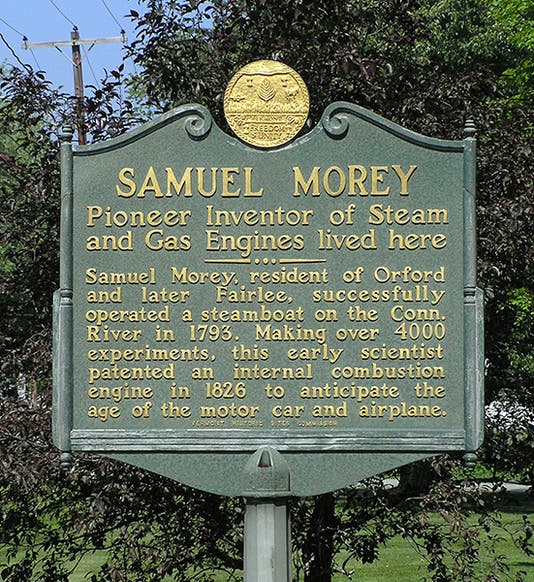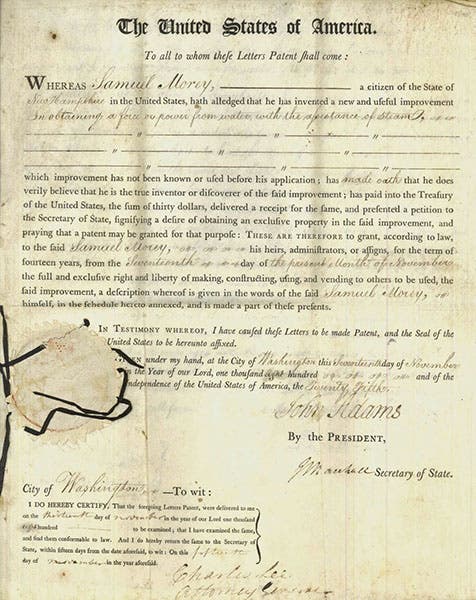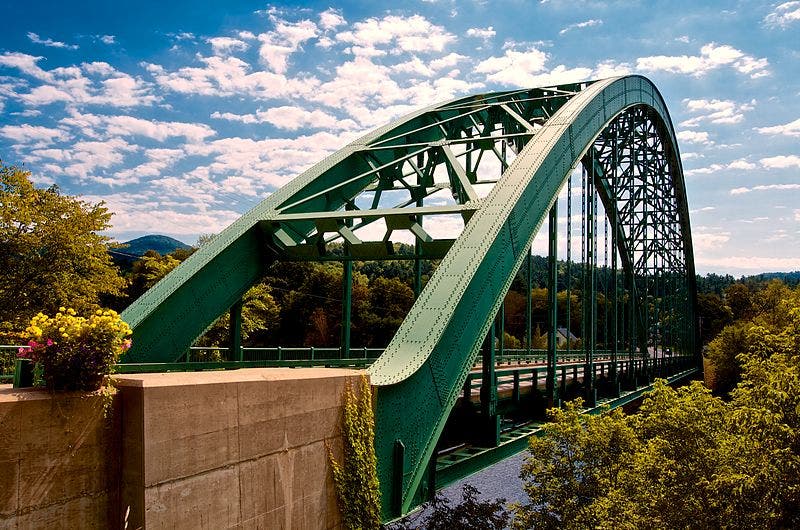Scientist of the Day - Samuel Morey
Samuel Morey, an American inventor, was born Oct. 23, 1762. Morey was similar in many ways to another New England inventor, Rufus Porter, who has been profiled by Ben Gross in this series, except that Morey is less well known than Porter, and Porter is not very well known at all. Morey spent most of his life on one side or the other of the Connecticut River, in Orford, New Hampshire, or Fairlee, Vermont. With the river right there, it is perhaps no surprise that an inventive sort like Morey would have tried to come up with a viable design for a steam-powered river boat. By 1793, he had one, and he built two more before the 1790s were out. His boats used paddle wheels, at first at the back, and then in pairs on the side. He seems to have been the first to actually build a side-wheeler steamboat. He planned to go into commercial steamboat production, but he could not find financial backing. That was provided instead by Chancellor Livingston to Robert Fulton, who commonly gets the credit for inventing the steamboat, although Morey complained that Fulton used many of Morey's ideas in his boats, without giving due credit.
Morey received many patents for his inventions – he just doesn't seem to have patented the right elements of his creations. Nearly all U.S. patents issued before 1836 were destroyed in a fire that year, but some years ago, it was discovered that owner's copies of many of Morey's patents survive in the Dartmouth Library. The Library displayed them in an exhibition on patents in 2006, and they made an impressive display, because each Morey patent is signed by the U.S. President at the time: George Washington, John Adams, James Madison, John Quincy Adams, Andrew Jackson. We show one issued in 1800 titled "Force from Water with Assist of Steam" (second image). It was a patent issued in 1826 that got everyone's attention when it turned up at Dartmouth: “Patent for a gas or vapour engine,” signed by John Quincy Adams. Morey invented the internal combustion engine and received a patent for it in 1826. He even built an automobile; his engine ran on turpentine and had valves and a carburetor and many other features of the modern internal combustion engine. It didn't work quite like a modern engine, more like a steam engine, in that the explosion did not provide direct power – rather, it evacuated the chamber, and it was atmospheric pressure, refilling the chamber, that provided the power. As with his steamboat, Morey could find no backers, and the invention went for naught, at least in Morey's lifetime.
We do not have much to remember Morey by, other than the patents at Dartmouth. There are no surviving Morey steamboats, vapor engines, or even any models of any his inventions. There are several papers that he published in Silliman’s Journal, and we have those in the Library. There is a portrait that circulates, but it first appeared in a New Hampshire magazine in 1910 and if it was based on a real portrait, no evidence was or has since been provided. But they are proud of Morey in the twin cities of Orford and Fairlee. He does not have a museum, the way Rufus Porter has in Bridgton, Maine – probably because there would be nothing to put in a Morey Museum – but his house survives, and there is a historic plaque in Fairlee that we used as our opening image. His gravestone also can be found and visited, although I note that his birthday is missing from the stone, so I do not know how reliable the birth date is that we are celebrating today.
If you go to Orford to see the Morey house and want to cross the river to view the road marker in Fairlee, you will have to traverse a handsome bridge (third image). It has been named, fittingly, the Samuel Morey Memorial Bridge. I don’t think Rufus Porter has a bridge.
The Vermont Historical Society responded to the initial version of this post with the welcome information that they have an original Morey steam engine in their collection, and it is currently part of an exhibition, Innovation in Vermont. The steam engine looks like a sealed metal tub with a rotating piston at the top and was used to power one of his steamboats. You can see a photograph of the Morey steam engine here, a description of the engine here, and an illustrated itemization of the exhibition here.
Revised Oct. 23, 2020.
Dr. William B. Ashworth, Jr., Consultant for the History of Science, Linda Hall Library and Associate Professor emeritus, Department of History, University of Missouri-Kansas City. Comments or corrections are welcome; please direct to ashworthw@umkc.edu.








